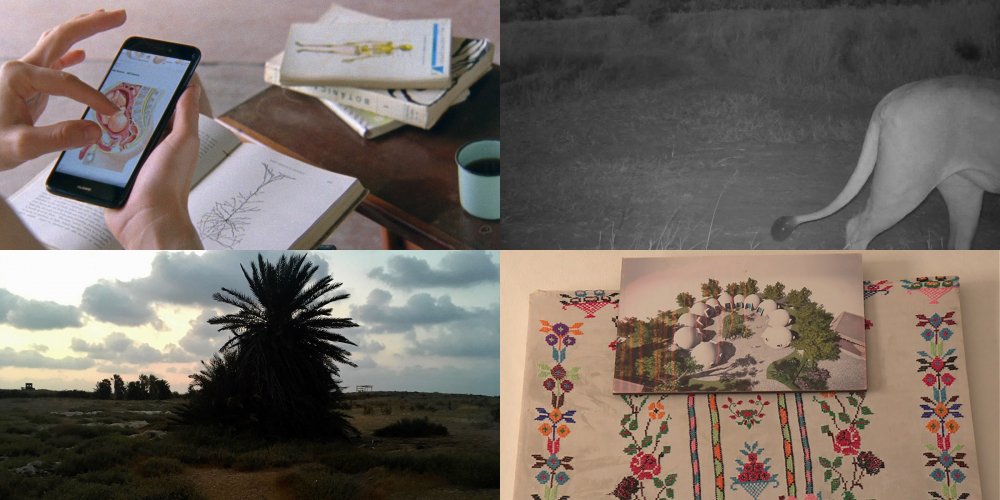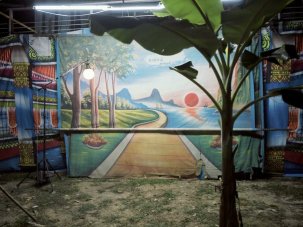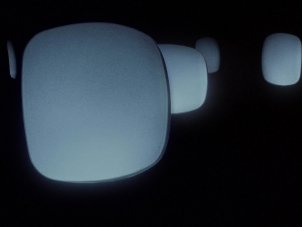Wavelengths ran 5-15 September 2019 as part of the Toronto International Film Festival.
Ever since Georges Méliès took us on a trip to the moon, cinema has been an unstoppable space and time machine. In this year’s Wavelengths, a section of the Toronto International Film Festival dedicated to experimental film, some of the most imaginative films shared with Méliès the sense of cosmic wonder, but also the trepidation that accompanies exploration.
1. Sun Rave
There is no actual spaceship in the Lebanese artist Roy Samaha’s short film Sun Rave, which at Wavelengths was the centrepiece of a dedicated shorts programme, accompanied by a number of other movies by the likes of Blake Williams, Maureen Fazendeiro and Burak Çevik all concerned with dislocation, literal or figurative. Yet Sun Rave is very much a dream – or perhaps, more accurately, a nightmare – of galactic reciprocity.
Samaha evokes a cosmic disturbance, called a solar magnetic storm. The real 2013 storm that Samaha references barely missed the Earth, where it could have disrupted magnetic fields and, as Samaha tells us in a magical leap that comes across like something straight out of Méliès, “ended autocratic regimes”. Samaha’s outrageous premise is that solar phenomena affect human aggression (but then again, given recent studies on how climate change does just that, the whole thesis gains some plausibility).
A clip from Sun Rave
Like Méliès, Samaha achieves his cinema with simple means. Blocks of text, displayed over images, list scientific facts about solar storms and short-wave radios (good for listening to such storms), before the narrative becomes more personal (and possibly made-up). In first person, the film’s narrator recounts how, in the late 1980s, when he was 11, a mysterious British couple was living next door to his parents’ apartment in Lebanon. Through the walls, a woman’s voice could be heard, repeating numeric sequences, which the family took to be a spiritist ritual, but which was more likely a code.
The story then unravels like a Cold War spy thriller, building up to the dismantling of the Soviet Bloc, and the mysterious couple’s sudden disappearance. Throughout, ordinary images – furniture and stain-smeared walls, purported to be the couple’s apartment, footage of the beachside, blurry fragments of streets and buildings – mix with displays of physics equations, and with archival footage from cities such as Cold-War era Bucharest and Berlin. If there’s one thing that Samaha’s witty, sweeping short shows is that when it comes to human imagination, the cosmic is always eerily within reach.
2. SaF05
While (2018 Turner Prize winner) Charlotte Prodger’s cinematic travelogue SaF05 is also presented as partly a science-fiction film, most of its imagery remains in the earthly realm. In the third installment of her trilogy, alongside Stoneymollan Trail (2015, excerpt) and BRIDGIT (2016, excerpt), Prodger continues to explore gender and identity, this time against a backdrop of a Botswana desert.
The film opens with a black-and-white video of a lioness roaring, as if in heat. The camera remains fixed, while the animal prowls around it. From there, Prodger takes us through varieties of African landscape – particularly caked rock formations, a tall termite structure standing like a totem in a secluded parched landscape, and later an open road. All these while Prodger speaks in voiceover, weaving personal stories: early childhood memories circling around unease, the dream to “wake up as a boy”, and the memories of a Bible study group at a Calvinist Church in the mid 1980s.
These ruminations give way to a sci-fi narrative in which the narrator’s female companions are lusted after and mourned. The women bear futuristic names such as SaF05 (a name researchers have also given to Botswana lionesses with some male characteristics). The memories, like the rocks themselves, splinter – they are fragments retrieved and thrown into the present, like meteorites.
As did Méliès, Prodger makes the familiar strange. In an extended sequence she is heard off-screen giving directions to a remote-drone operator, a section interwoven with her remembrance of the first time she intimately touched a woman.
On the one hand the drone operation – its shadow on the endless beige sand with clumps of plant and rock formations – recalls moon exploration. On the other, the scene is as erotic as it is surreal. The globular termite structure recalls the bulging figures of such British artists as Sarah Lucas, who often evoke a curvaceous, erotic female form. The universe we are plunged into is therefore, on some level, a lunar landscape of desire.
3. The Bite (A Mordida)
The future looks very different in the Portuguese filmmaker Pedro Neves Marquez’s inventive short The Bite (A Mordida), one of the highlights of this year’s Wavelengths. Set in the São Paulo state forest, with beautifully composed cinematography by Marta Simões, The Bite is a tropical fantasy of biological apocalypse, which also serves as a metaphor for the Brazilian ultra-right’s aggression against LGBTQs.
In the film, partly set in a lab, scientists inject a new strain of DNA into male mosquitoes so that the engineered insects sterilise the entire population while mating. A conversation between the two lab workers revolves around eradicating the epidemic, “this unstoppable thing.” Meanwhile other phrases – such as “Now we have this monster taking over the country” – vaguely evoke both a plague and, in a less literal sense, also the country’s current rhetoric of intolerance.
The Bite trailer
Aside from the constant game of double meanings, the film is a compelling, morbid fable. The lab’s sterile interior gives way to a foreboding ride into a rainforest – the dark road captured as if seen by an air-born mosquito. In the woods, a treehouse protected with a net serves as a haven for a biracial couple. In their dialogue, the immediate threat is more present (“The military is in the streets”). This militarised aura lends the film a futuristic bent, while also recalling Brazil’s repressive militarist past. The mosquito-ridden forest looms, and so too the threat of violence.
As one of the protagonists is eventually revealed to be trans, we are reminded that the same biological, crudely determinist vocabulary which pervades the scientists’ mindset – of dissemination, species, disease and extermination – has been used against the LGBTQs. Futurism in this sense, and the apocalypse, have always been with us, rooted in the subterranean fear of the other. But Marquez and his cast up-end this apocalyptic agenda by staging a moonlit polysexual love scene – a sensualist visual echo of what one of the scientists sums up as a simple motto: “Nature is changing.”
4. Who’s Afraid of Ideology?
While Marquez’s short is a utopian dream, set in opposition to a Darwinist, militarised future, the American artist Marwa Arsanios’s ongoing video project Who’s Afraid of Ideology? [watch Part 1 here] looks at utopian solidarity and collaborative efforts as practical models for how communities may organise in the future. The broader context of Arasanios’s project, which was commissioned by the Sharjah Biennial, is also partly military: for Part 2, which screened in Wavelengths, she traveled to regions in both northern Syria and northern Lebanon.
In Syria, Arasanios visits Jinwar, a community that’s being created exclusively for women and their children to provide a safe shelter from violence, and as a space to assert the women’s sovereignty. Arasanios shows the few men still present on site, as builders, and conducts interviews with the women who speak of their reasons for being at the commune.
In the parallel segment, also revolving around economic independence and sovereignty, and more specifically land re-appropriation efforts by the Rojava movement, Arsanios films the landscape and the women working in the fields of a Lebanese cooperative. The farmers and organisers speak, mostly off-camera, about their efforts to raise crops that they were previously discouraged from planting, such as apples, to escape forced monocropping. Arsanios, who spelt out her motto in Part 1 (“Thinking isn’t the other of nature”), investigates how ecology and human desire for preservation and healing are part of the same ecosystem. While her observational method is far from the formal playfulness of both Méliès and the aforementioned artists, in her recording of the landscape and its feminist-driven communes as containing a potential for our survival, she too offers glimpses of the future.
TIFF Q&A with Roy Samaha and more
Wavelengths Q&A with Charlotte Prodger, Pedro Neves Marquez and more
Wavelengths Q&A with Marwa Arasanios and more
-
The 100 Greatest Films of All Time 2012

In our biggest ever film critics’ poll, the list of best movies ever made has a new top film, ending the 50-year reign of Citizen Kane.
Wednesday 1 August 2012
-
Toronto International Film Festival 2019 – all our coverage

Our reviews of the best new films at this year’s TIFF.
-
The Digital Edition and Archive quick link
Log in here to your digital edition and archive subscription, take a look at the packages on offer and buy a subscription.








